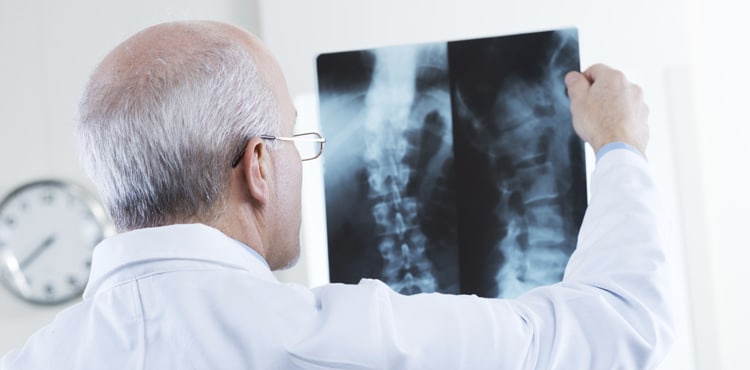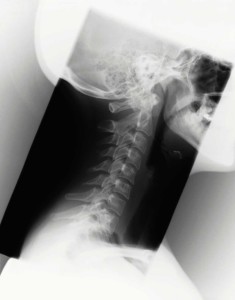
Patients are filing an INFUSE Bone Graft lawsuit for injuries they allegedly received after having the medical device implanted in them in ways not approved by the FDA. Medical device attorneys note that lawsuit seek damages from the device maker for promoting these unapproved uses to surgeons and other healthcare providers. Affected patients may be eligible to recover compensation from the device maker if they were injured as the result of an unapproved use of the device.
For more information, contact Attorney Group today. Our consultations are free, confidential and without any obligation on your part. We can help answer your questions, and if you choose to pursue a claim we can connect you with an affiliated INFUSE Bone Graft lawsuit attorney who can assist you throughout the legal process.
Have You Seen INFUSE Bone Graft Lawsuit Commercial?
You may have seen an INFUSE Bone Graft lawsuit commercial on television and wondered whether you or a loved one have been affected by the INFUSE Bone Graft and, if so, whether you are eligible to pursue a claim against the manufacturer or others. The purpose of this article is to provide you with additional information so that you have a better understanding of your options.
What is the INFUSE Bone Graft?
The INFUSE Bone Graft is a medical device approved for use in patients with degenerative disc disease in their lower backs. It is intended to provided spacing between and stabilization of affected regions of the spine, as well as to promote bone growth to permanently fuse the spine.
According to device information obtained from the U.S. Food and Drug Administration (FDA), the INFUSE Bone Graft, manufactured by Medtronic Sofamor Danek and known generically as “filler, recombinant human bone morphogenetic protein, collagen scaffold with metal prosthesis, osteoinduction,” is a
A device to help fuse vertebrae in the lower spine in order to treat degenerative disc disease. It differs from other, similar devices in that it uses genetically engineered protein to help build bone tissue in the fusion process, instead of using a graft of the patient’s own bone (an autograft).
The device consists of three components spilt among two parts –
1) A metallic tapered spinal fusion cage (known as the LT-CAGE™ Lumbar Tapered Fusion Device); and
2) Aa bone graft substitute (InFUSE™ Bone Graft) which consists of a genetically-engineered human protein (rhBMP-2) along with a carrier/scaffold for the protein (manufactured from bovine [cow] Type I collagen) that is placed inside the fusion cage.
The fusion cage component maintains the spacing and temporarily stabilizes the diseased region of the spine, while the INFUSE Bone Graft component is used to form bone, which would permanently stabilize (fuse) this portion of the spine. The device is used in the lower region of the spine (L4-S1) to treat degenerative disc disease.
The FDA approved the device in 2002 for use in patients with lumbar degenerative disc disease.
What are the Risks of the INFUSE Bone Graft?
The FDA’s Summary of Safety and Effectiveness Data for the INFUSE Bone Graft lists a number of contraindications and warnings for the device. Contraindications include use in patients who:
- Have a known hypersensitivity to recombinant human Bone Morphogenetic Protein-2, bovine Type I collagen or to other components of the formulation.
- Have a resected or extant tumor in the vicinity of where the device would be used.
- Are younger than 18 years of age, or who are pregnant
- Have an active infection at the surgical site, or who have an allergy to titanium or titanium alloy
The FDA summary noted that the safety and effectiveness of the INFUSE Bone Graft implanted in locations other than the lower back had not been established.
Has There Been an INFUSE Bone Graft Recall?
There is presently no recall of the INFUSE Bone Graft device. However, in 2008 the FDA issued a Public Health Notification for “Life-threatening Complications Associated with Recombinant Human Bone Morphogenetic Protein in Cervical Spine Fusion.” In the notification, the FDA warned healthcare professionals that the use of recombinant human Bone Morphogenetic Protein in the cervical (i.e., upper) spine had not been approved, and it further stated that, as of 2008:
FDA has received at least 38 reports of complications during the last 4 years with the use of rhBMP in cervical spine fusion. These complications were associated with swelling of neck and throat tissue, which resulted in compression of the airway and/or neurological structures in the neck. Some reports describe difficulty swallowing, breathing or speaking. Severe dysphagia following cervical spine fusion using rhBMP products has also been reported in the literature.
The notification also repeated some of the contraindications of the device, and advised patients who had received the treatment in their cervical spine to “seek medical attention immediately at the first sign of an airway complication.”

Why is There an INFUSE Bone Graft Lawsuit?
Many INFUSE Bone Graft lawsuits allege that the manufacturer wrongfully encouraged surgeons to use the device in the upper spine. This is known as “off label” use, and while doctors are allowed to use drugs and medical devices for treatments not approved by the FDA – consistent with the standards of care for the medical profession – drug and device makers are forbidden to promote or encourage off label use of their products.
Patients who received the device in their upper spines, which is not approved by the FDA, and suffered injuries, are seeking compensation from the device maker for the wrongful promotion of the device.
Additionally, federal whistleblower lawsuits were filed against the manufacturer for allegedly “paying illegal kickbacks to certain physicians in connection with promoting the off-label use of Infuse in the cervical spine, which resulted in the submission of false or fraudulent claims to federal health care programs.”
Although not related to an INFUSE Bone Graft lawsuit, according to an October 2012 press release, the U.S. Senate Finance Committee found that:
Without public disclosure of their roles, Medtronic employees collaborated with physician authors to edit – and in some cases, write – segments of published studies on its bone-growth product InFuse. The studies as published may have inaccurately represented InFuse’s risks and may have placed added weight on side effects of alternative treatments. Medtronic, which describes itself as “the world’s largest independent medical technology company,” also maintained significant, previously-undisclosed financial ties with physicians who authored studies about InFuse, making $210 million in payments to physicians over a 15-year period.
Health insurer Humana filed an INFUSE Bone Graft lawsuit against Medtronic in 2014 alleging that the device maker paid for literature falsely representing the safety of its Infuse bone graft product for uses not approved by the FDA.
Is There an INFUSE Bone Graft Class Action?
There is no INFUSE Bone Graft class action pending on behalf of injured patients as of January 28, 2016. INFUSE Bone Graft lawsuit attorneys are doubtful that a class action will be certified for patients who are adversely affected by the device. Instead, if multiple lawsuits are filed against the drug makers alleging injuries and other damages caused by the device, it is anticipated that these lawsuits will be consolidated for discovery and other pretrial proceedings.
When cases are consolidated in this way in federal court it is called a multidistrict litigation (MDL), and on a state level it is known as a state court consolidated proceeding. MDLs are distinct from class actions, and it is generally agreed that consolidating cases instead of proceeding in a class action is a more efficient and effective way of handling claims arising from injuries caused by pharmaceutical products.
According to news reports, Medtronic did agree in 2012 to pay $85 million to settle an INFUSE class action brought by company shareholders who claimed that “Medtronic did not disclose to shareholders the adverse effects of its Infuse product, illegally marketed the product for uses not approved by regulators, and did not disclose to shareholders how much of the company’s revenue from Infuse came from these unapproved uses.”
Have There Been INFUSE Bone Graft Lawsuit Settlements?
In addition to the INFUSE class action settlement with shareholders, news sources report that in 2014 Medtronic paid $22 million, without an admission of liability, to settle approximately 950 claims brought by INFUSE Bone Graft lawsuit plaintiffs. At the time, Medtronic was reported to have placed an additional $140 in reserves to cover the cost of ongoing litigation and possible INFUSE Bone Graft Lawsuit Settlements in the future.
Past INFUSE Bone Graft Lawsuit Settlements do not mean that future cases will be settled or that any particular case will result in a recovery of money. The settlements also do not prevent claims from being brought by affected patients in the future.
INFUSE Bone Graft News
- 2015 – INFUSE Bone Graft Lawsuits remain pending against Medtronic alleging injuries and other damages from the wrongful off label promotion of the device.
- 2014 – Medtronic agrees to a $22 million INFUSE Bone Graft Lawsuit Settlement of approximately 950 claims.
- 2012 – The U.S. Senate Finance Committee finds that Medtronic “maintained significant, previously-undisclosed financial ties with physicians who authored studies about InFuse, making $210 million in payments to physicians over a 15-year period.”
- 2012 – Medtronic agrees to pay $85 million to settle a company shareholder INFUSE Bone Graft class action.
- 2008 – The FDA issues a public health notification about “life-threatening complications associated with recombinant human bone morphogenetic protein in cervical spine fusion.”
- 2002 – The INFUSE Bone Graft device is approved for use in lumbar spinal fusion procedures, and noted that the safety and effectiveness of the INFUSE Bone Graft implanted in locations other than the lower back had not been established.
How an INFUSE Bone Graft Lawsuit Attorney Can Help

Medical device makers have a duty to provide safe products. If there are risks of harm associated with their devices, they also must provide adequate warnings. If a device maker fails to fulfill this duty, it could be held liable in lawsuits for injuries that may result.
Patients who are injured by an INFUSE Bone Graft may be entitled to compensation for damages, including:
- Medical expenses
- The permanency of the injury
- Pain, suffering, and mental anguish
- Loss of income or ability to work
If a patient dies from complications related to a defective INFUSE Bone Graft, family members may be entitled to compensation for the wrongful death of their loved one, including:
- Conscious pain and suffering of a loved one prior to death
- Pain, suffering, and mental anguish from the loss of a loved one
- Funeral expenses
Patients who have suffered severe complications from an INFUSE Bone Graft, as well as the families of those who have died as a result of complications with the device, are encouraged to seek the advice of an INFUSE Bone Graft lawsuit attorney to learn more about their rights and remedies.
For more information, or to learn your options for a possible INFUSE Bone Graft lawsuit, contact Attorney Group.
When you contact us, an attorney will follow up with you to speak with you about your case or answer questions that you might have. There is no cost or obligation to speak with us, and any information you provide will be kept confidential.
Please note that the law limits the time you have to pursue a claim or file a lawsuit for an injury. If you think you have a case, you should not delay taking action.





